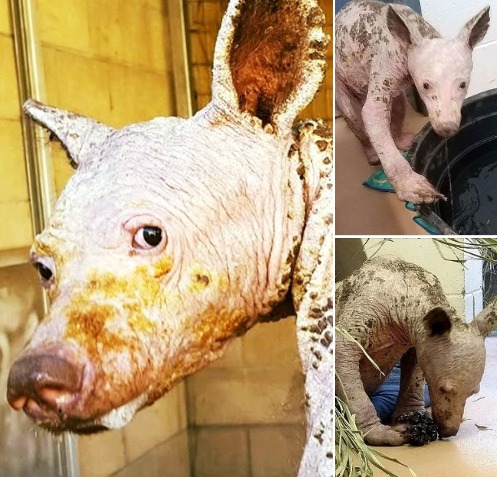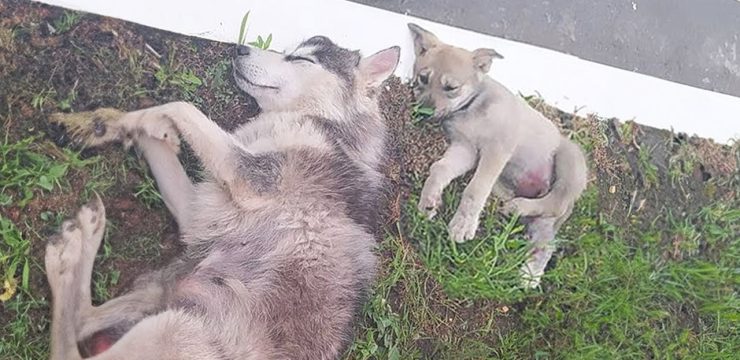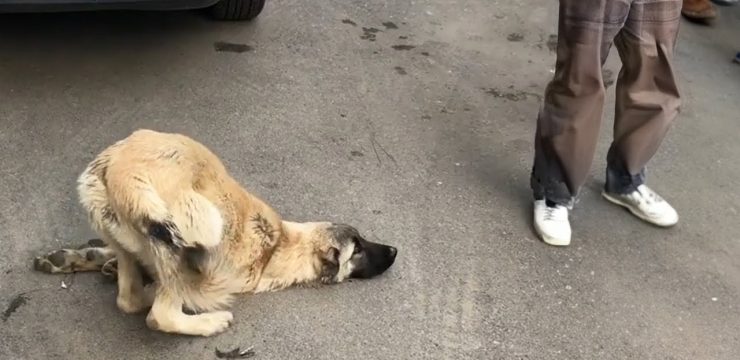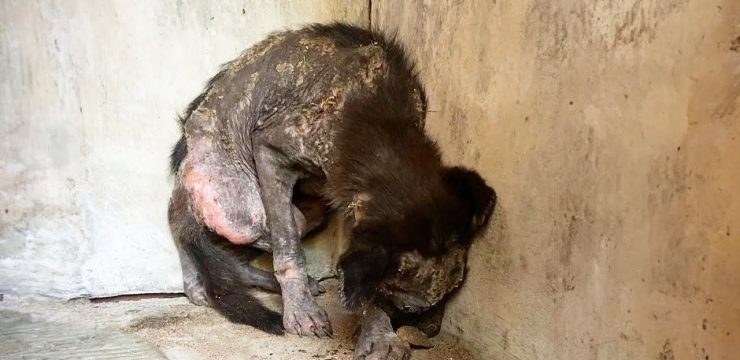If someone asked you to picture a bear, you’d probably imagine a large, powerful creature covered in thick fur, a symbol of strength and wild beauty. But when rescuers first found Eve, they weren’t even sure what she was. She looked nothing like the majestic animals we usually associate with the word “bear.” Instead, she was hairless, her skin raw and pink, covered in crusty scabs. She was stripped not only of her fur but also of her dignity, barely recognizable as a black bear at all.

Eve’s story began on Christmas Eve in 2017, when the California Department of Fish and Wildlife rescued her in Placer County. Because of the special date she was found, they gave her the name Eve. Her condition was heartbreaking—emaciated, weak, and suffering from a severe case of mange that had left her almost completely bald. She was just a young black bear, but her size was far smaller than it should have been for her age, likely due to malnutrition. From that moment on, her long journey to healing and hope began.
Eve was taken to The Fund for Animals Wildlife Center, a facility operated in partnership with The Humane Society of the United States. The dedicated staff there quickly recognized the seriousness of her condition. Extensive mange had ravaged her body, and a lice infestation caused constant itching and pain. But despite how grim things looked, the team refused to give up on her. They began a careful treatment regimen to combat the parasites, which included medicated baths and topical treatments. Slowly, they hoped, her fur would return, and so would her health.
As the weeks passed, Eve made some progress, but not as much as the caretakers had hoped. By April—four months into her recovery—the updates from the center reflected cautious optimism. In a Facebook post, they shared that some patches of fur were starting to grow back, especially around her neck and upper back. However, the regrowth was still sparse overall, and scaly crusts remained on parts of her spine. Yet, there were signs of joy amid the struggle. Eve had grown fond of her pools and would spend hours splashing and playing in the water. Her playful spirit offered a glimmer of hope that she was healing not just physically but emotionally as well.
By July, the mange had nearly cleared up. However, Eve continued to suffer from lingering skin infections and needed ongoing medications. Still, the progress was undeniable. The staff remained hopeful but realistic, knowing that Eve’s future would depend on whether she could regain enough health and fur to survive in the wild. “There is no doubt, we all want her to be healthy and have the opportunity for a good quality of life,” they wrote. “Only time will tell us what tomorrow brings, but for now it is still our fervent wish that she is able to return to the wild one day.”
As more time passed, however, it became clear that Eve’s condition would make survival in the wild too risky. Her fur, though growing, would likely never be thick enough to protect her from harsh weather conditions, and the previous year’s wildfires across California had devastated large areas of potential habitat. In light of these challenges, the wildlife center made the difficult decision: Eve would not be released into the wild. Her safety and well-being came first, and that meant giving her a permanent home where she could be cared for.
The center didn’t take this responsibility lightly. They launched a fundraising effort to build Eve a forever home at their sister sanctuary, the Cleveland Amory Black Beauty Ranch in Texas. Their goal was to create a spacious, naturalistic habitat where Eve could live out her life in peace. In their words: “We have always been committed to Eve’s care and have always put her best interest foremost — just as we do now. We will continue our commitment and are in the initial stages of preparing Eve for a Forever Home at our sister animal sanctuary.”
Building such a home, of course, isn’t cheap. The center revealed that even just caring for Eve at their current facility cost nearly \$500 a week, and bears, as they humorously noted, aren’t cheap houseguests. “They’ll literally eat you out of house and home!” they joked. But despite the cost, they remained dedicated to giving Eve the life she deserved. They had already come so far, and with the help of compassionate donors and supporters, they believed they could go the distance.
As for Eve, she continued to blossom under the care of her devoted team. Now affectionately nicknamed the “Bare Bear,” she had become something of a symbol of resilience and second chances. Her story, once heartbreaking, had transformed into one of hope, healing, and the incredible power of compassion.
The staff at Black Beauty Ranch eagerly awaited her arrival, ready to welcome her into her new forever home. The volunteers and animal lovers who had followed Eve’s journey were touched by how far she had come—from a fragile, unrecognizable creature to a strong, thriving bear with a second chance at life.
Stories like Eve’s remind us of the deep impact kindness can have. They show us that even the most hopeless situations can be turned around with care, commitment, and love. Eve may have lost her fur, but she never lost her spirit. And thanks to the people who believed in her, she now has a life filled with safety, play, and dignity.
If you found Eve’s transformation as inspiring as we do, consider sharing her story with others. Her journey is a powerful reminder of what’s possible when we choose compassion.





